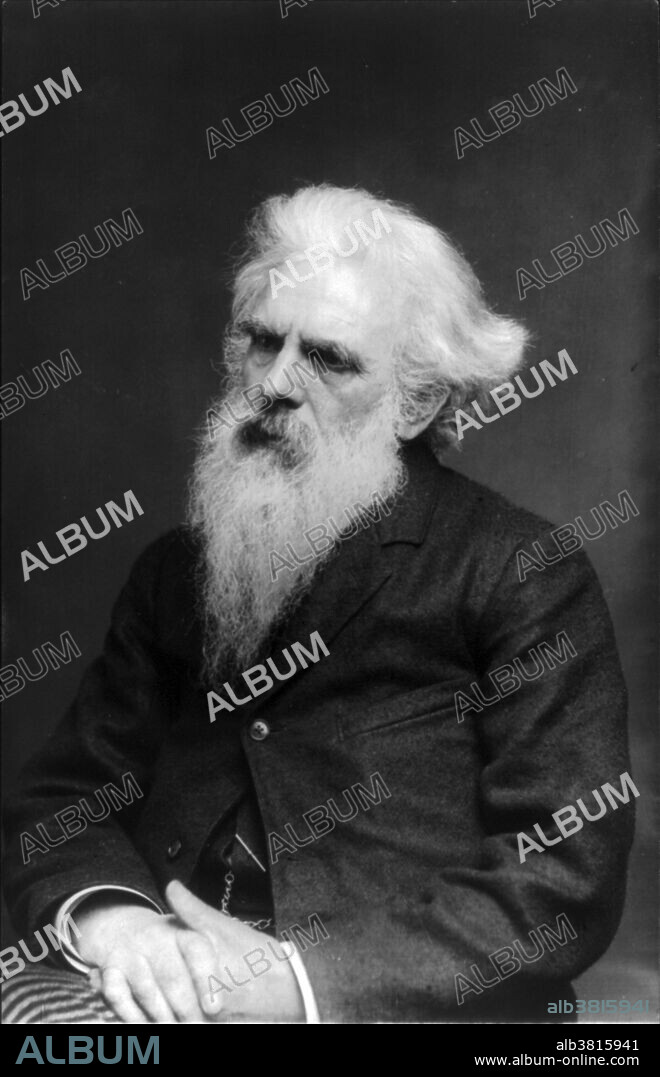alb3815941
Eadweard Muybridge, English Photographer

|
Add to another lightbox |
|
Add to another lightbox |



Buy this image.
Select the use:

Title:
Eadweard Muybridge, English Photographer
Caption:
Eadweard James Muybridge (April 9, 1830 - May 8, 1904) was an English photographer important for his pioneering work in photographic studies of motion and in motion-picture projection. He immigrated to the United States as a young man but remained obscure until 1868, when his large photographs of Yosemite Valley, California, made him world famous. He is known for his pioneering work on animal locomotion in 1877 and 1878, which used multiple cameras to capture motion in stop-action photographs, and his zoopraxiscope, a device for projecting motion pictures that pre-dated the flexible perforated film strip used in cinematography. In the 1880s, he entered a very productive period at the University of Pennsylvania in Philadelphia, producing over 100,000 images of animals and humans in motion, capturing what the human eye could not distinguish as separate movements. He spent much of his later years giving public lectures and demonstrations of his photography and early motion picture sequences. He also edited and published compilations of his work, which greatly influenced visual artists and the developing fields of scientific and industrial photography. He returned to England permanently in 1894. He published two popular books of his work, Animals in Motion (1899) and The Human Figure in Motion (1901), both of which remain in print over a century later. He died in 1904 at the age of 74.
Personalities:
Category:
History: Personalities
Credit:
Album / LOC/Science Source
Releases:
Image size:
3300 x 5123 px | 48.4 MB
Print size:
27.9 x 43.4 cm | 11.0 x 17.1 in (300 dpi)
Keywords:
19TH CENTURY • 20 20TH XX XXTH TWENTIETH CENTURY • 20 XX TWENTIETH CENTURY • 20TH CENTURY • 20TH • ANIMALS IN MOTION • BW • CELEBRITIES • CELEBRITY • EADWEARD JAMES MUYBRIDGE • EADWEARD MUYBRIDGE • EDWARD JAMES MUYBRIDGE • EDWARD MUYBRIDGE • ENGLISH • EUROPEA • EUROPEAN • EUROPEANS • FAMOUS PEOPLE • FAMOUS • FIGURE • FOTOGRAFIA • HISTORIC • HISTORICAL • HISTORY • HISTORY: PERSONALITIES • HUMAN FIGURE IN MOTION • IMPORTANT • MALE • MAN • MEN • MOMENT IN TIME • MOTION-PICTURE PROJECTION • MUYBRIDGE • NOTABLE • PEOPLE • PERSON • PERSONALITIES • PERSONALITY • PHOTO • PHOTOGRAPH • PHOTOGRAPHER • PHOTOGRAPHIE • PHOTOGRAPHY • PHOTOS • PIONEER • STOP-ACTION PHOTOGRAPHS • STUDIES OF MOTION • TECHNOLOGY • TWENTIETH CENTURY • WELL-KNOWN • ZOOPRAXISCOPE


 Pinterest
Pinterest Twitter
Twitter Facebook
Facebook Copy link
Copy link Email
Email
